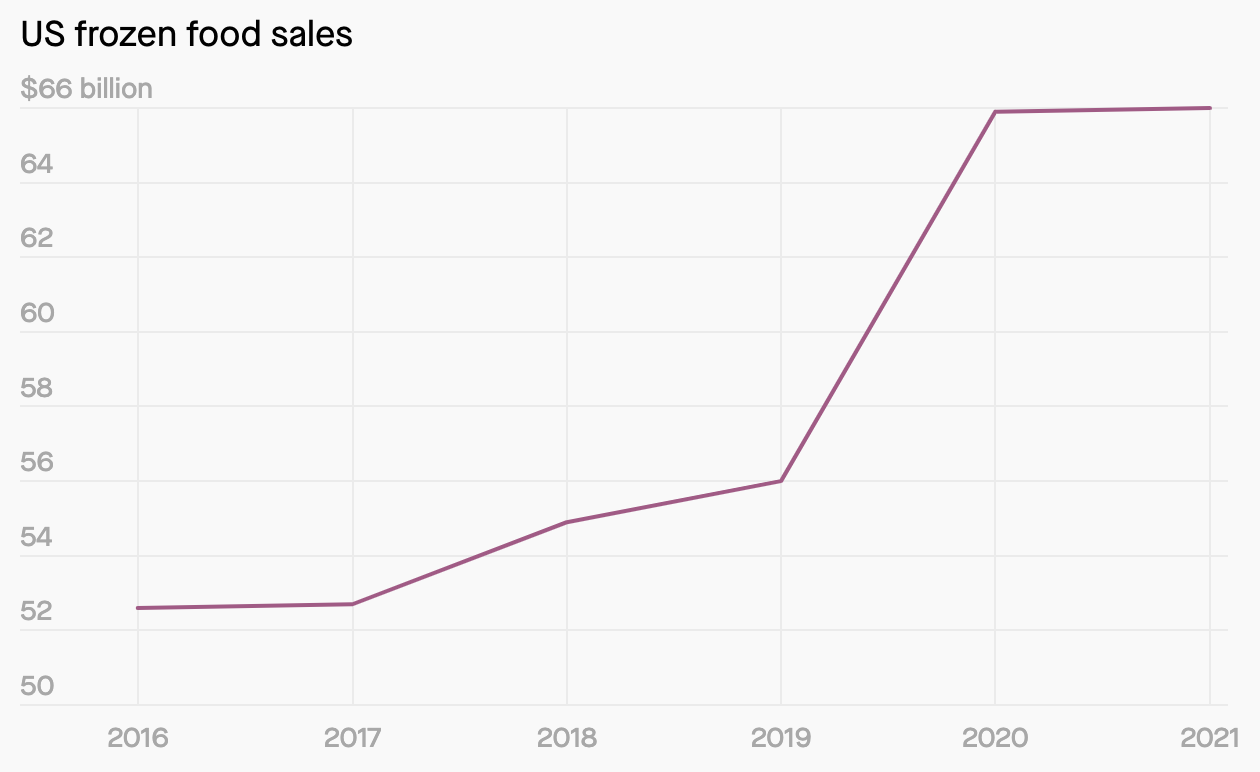In recent years the popularity of frozen food has steadily increased in the United States. However, during the pandemic, frozen food experienced a surge in demand. The Food Institute reports that frozen food sales increased by 21%, with the pandemic serving as a major contributing factor to this growth. The pandemic-induced lockdowns and social distancing measures led to significant changes in people’s eating habits, and many turned to frozen foods for their convenience, long shelf life, nutritional value, and ability to be stored in bulk.
Source: Quartz
Despite a steady increase in dollar sales, unit sales of frozen food fell in 2021 and 2022 by 3.2% and 5.1%, respectively, highlighting the potential impact of inflation on frozen food costs, reported the Food & Beverage Insider. Notwithstanding these declines, unit sales are still higher than they were before the pandemic, demonstrating that the demand for frozen foods remains strong – in part thanks to millennials who have now become frozen food’s largest consumers.
According to the Food Navigator, older millennial shoppers, who are approaching the age of 40, represent 48% of the consumers of frozen foods. This generation prioritizes health and wellness and values a wider range of culinary options that use premium ingredients with fewer additives and preservatives. Alongside nutrition, they also demand convenience and sustainability in their food choices. With over 3,700 options in the frozen food section, there is something for every taste and lifestyle, notes the National Frozen & Refrigerated Foods Association.
The growing popularity of frozen food has led 29% of consumers to expand their freezer space since the pandemic began, reported the American Frozen Food Institute. As demand for frozen food products increases, retailers are seeking ways to optimize their freezer sections while also reducing energy consumption for higher quality and more efficient frozen food storage. Companies like Viking Cold Solutions are helping retailers and distributors to not only improve the efficiency of their cold storage system by up to 50% but also increase facility resiliency. These advancements indicate a promising and sustainable future for frozen food.
With all the demands on consumers’ lives, the greater convenience and quality of frozen foods meet a growing priority. The frozen food industry now has innovative new technologies to sustainably address consumers’ needs while reducing energy costs. Given the challenges of inflation and an unstable economy, it will be interesting to observe the further developments of frozen foods and cold storage technologies over the next few years.
Learn more about Viking Cold’s sustainable Thermal Energy Storage technology here.

